America’s love for Sushi, Sashimi, and Nigiri has adopted the artistic creativity that makes eating sushi a delicacy and experience. Countless combinations of fish, rice, seaweed, vegetables, and condiments create explosions of flavor. Whatever your variety of choices, they are all quite delicious. Sushi, in every sense of the word, is a delicacy handcrafted by master chefs.
Why is sushi so expensive? It takes talent, time, training, and high-end ingredients to build each handmade sushi roll appropriately.
Sushi in America
Sushi has what the Japanese would call Otaku – a term for people with obsessive interests. People will travel hours or plan vacations around the globe for the best sushi or to watch the best Itamae or Master Sushi Chef work their magic.
It is believed sushi first arrived in the United States sometime in the 1950s to cater to Japanese business people in California. The first significant influx of the popularity of sushi in America was with the Kawafuku Restaurant (Pictured below) in LA’s Little Tokyo in 1966 with Itamae Shigeo Saito. About a decade later, the Americanized California Roll was invented at the Tokyo Kai Kan restaurant in LA’s Little Tokyo.

Tuna-style maki rolls were seasonal due to the ability to get fresh tuna. At Tokyo Kai Kan, crab and avocado were subbed out for tuna, and a seasonal roll was introduced as an American sushi specialty. Other pioneers in Americanizing sushi have paved the way, such as Nobu Matsuhisa, known for his unique and obscure flavor blends that make perfect sense once they hit your tongue.
As sushi gained popularity and spread across the United States, the flavor palettes expanded just as much, if not more than the geographical reach.
Selecting the Right Ingredients
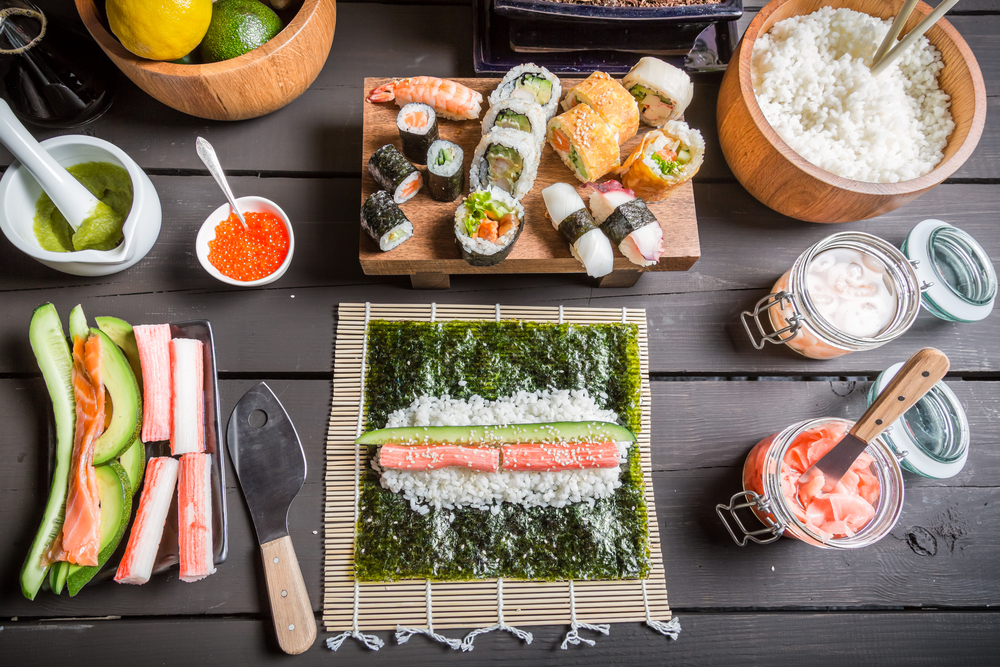
With so many sushi rolls and ingredient varieties, it can become a nightmare to plan the right amount of fish for a sushi restaurant in anticipation of its sales. When sushi grew in popularity, the combinations expanded tremendously from their traditional roots, incorporating variations in vegetables, condiments, and fruit. What never changed was the high-quality ingredients.
You can get fish such as tuna, salmon, mackerel, grouper, flounder… the list can go on and on. In addition, you could use other seafood such as eel, shrimp, squid, sea urchin, crab, lobster, scallops, roe, and even sea cucumber. You have your choice of condiments ranging from traditional wasabi and soy sauce to yum yum sauce, sweet eel sauce, and spicy sriracha mayonnaise. Whatever your combination, it is wrapped in a sheet of nori and surrounded by rice.
Costs for the Business and Consumer
Sushi fish differs from the fish you get at your local fish fry. It is high quality and either fresh or frozen fresh. Sushi grade Tuna ranges from $12/lb upwards to $200/lb depending on the season, demand, and the scarcity tuna is experiencing as some species linger on the brink of extinction, such as the Bluefin Tuna. As tuna is over-hunted, we have seen the size of the fish decrease over the years, making it rarer and rarer to find larger mature fish.
Recent headlines were made as Kiyoshi Kimura of the Japanese Kiyomura Corp paid over $3M for a 612 pound Bluefin Tuna, coming in at over $5,000 per pound. Kimura purchased the fish for his Sushi Zanmai restaurant chain, with an anticipated 12,000 pieces of tuna from his purchase. That is a whopping $250 per piece or roughly $306 per ounce of just the meat, not including other ingredients, labor, and overhead.
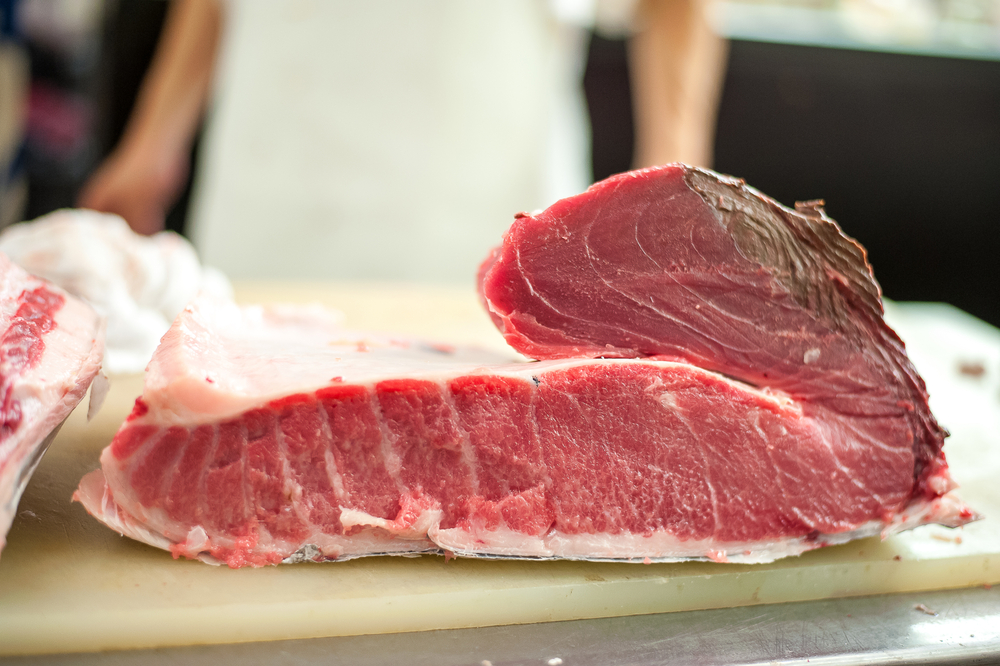
Outside of Kimura’s outrageous purchase, you can get a standard sushi roll for around $15 a roll, or $1.88 per piece, or a simple option like a California roll for $7 or $0.88 per piece. Going to a restaurant, you may order 2-3 rolls, get your ginger salad, miso soup, and possibly some edamame to munch on.
Add a drink or two for you and your date, and you’re looking at a $150 night plus tip. Good Sushi is not cheap, good fish is not cheap, and good fish doesn’t last long. When you buy sushi, you are purchasing the ingredients, but you are also purchasing the skill that goes into it.
Sushi: A Labor of Love
A Master Itamae can take anywhere from 5-20 years of apprenticeship. Read that again. Twenty years. A sushi chef apprenticeship is five years, but a master Itamae is twenty. You pay for delicious perfection when you go to a high-end sushi restaurant. Each roll is hand-layered, hand-rolled, hand-cut, and placed on display before making it to your table. An Itamae in training is tasked with cooking the rice.
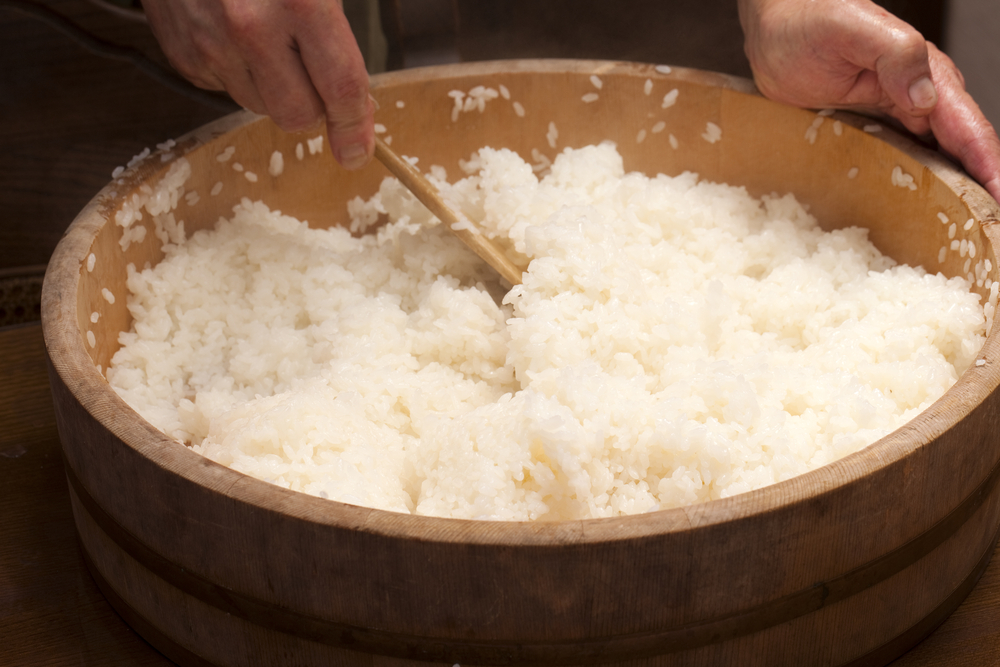
The rice is cooked to perfection, but not before being rinsed and soaked to remove excess starch. To truly make it sushi rice, a mixture of rice vinegar, sugar, and salt is produced and mixed into the warm rice and allowed to cool. Each roll or piece of sashimi is hand-molded, and each slice of fish is carefully filleted along the grain with a nicely sharpened knife to ensure the fish meat is cut, not torn.
An Expensive Craft
The most common knives used in sushi preparation range from a $110 Masahiro to a $1,050 Saki Takayuki, with many reaching even higher prices. If you make sushi at home, you can use a finely sharpened santoku.
An Itamae makes upwards of $70,000 per year. At most sushi restaurants, you can sit at the sushi bar and watch your Itamae work his magic, sometimes with several other Itamae or apprentices by his side. Your server, the bartender, and the hostess are all catering to your dining desires and leading up to the delectable finale.
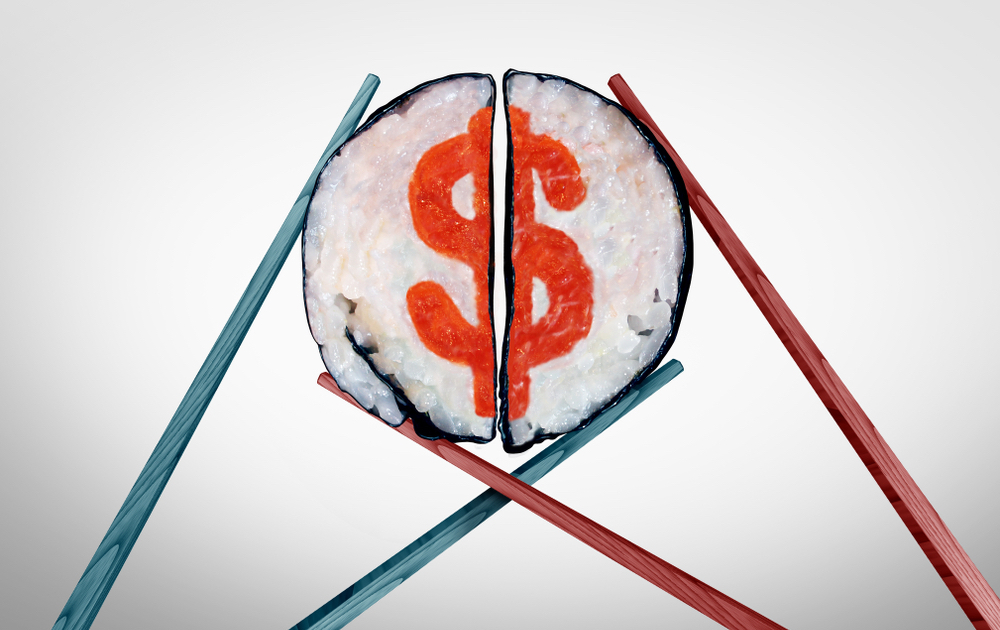
Let’s dive deep into LA’s Little Tokyo sushi bar. Rent goes for about $56 per square foot per month in the busy areas but averages around $25 per square foot in Little Tokyo. Assuming a 2,500-square-foot restaurant, that’s $62,500 in monthly rent.
This restaurant is busy and has 3 Itamae at an average salary of $80,000 per year. I’ve broken down the price of labor, rent, and ingredients in the tables.
Sushi Ingredients Costs Per Roll
Ingredients alone, each roll costs $4.63; adding in the fixed costs (labor & rent/utilities), assuming each roll goes for an average of $12 each, it would take 12,829 rolls to break even each month.
[ninja_tables id=”3127″]A busy restaurant on Thursday, Friday, and Saturday night can typically experience 320 people in and out at the 2,500 square foot range, selling around 640 rolls. Four weekends a month, that rate sells 7,680 rolls in a month. Add in lunch on Saturday and Sunday, and they could achieve the 12,829 sales needed to break even. Throw in drinks, appetizers, teriyaki-style sides, and desserts, and a sushi restaurant has the potential to be profitable if they plan their food correctly.
Sushi Restaurant Monthly Costs And Break-Even Point: $12 Per Roll
[ninja_tables id=”3130″]Ordering too much fish and having a bad sales week could mean lower sales and increased waste. Any restaurant takes meticulous planning and sales forecasting to get it right.
Break-Even Point: $15 Per Roll
In the following table, I have increased the average roll price to $15, and it has decreased the required sales to 9,118, a more achievable number from month to month. People will still pay $15 for a high-quality roll at a restaurant with a good atmosphere and excellent service.
[ninja_tables id=”3132″]Making sushi at Home
If you’re ok skipping the experience, you can make sushi at home too. Start with some of the essential tools: a good sharp Santoku knife ($20-$45), a bamboo rolling mat ($6), a wooden rice paddle ($4-$10), and a wooden or plastic bowl for your rice. Plastic or wood rice bowls and rice paddles are essential pieces here. Metal utensils will damage the rice, and a metal bowl will potentially react with the rice vinegar and alter the taste.
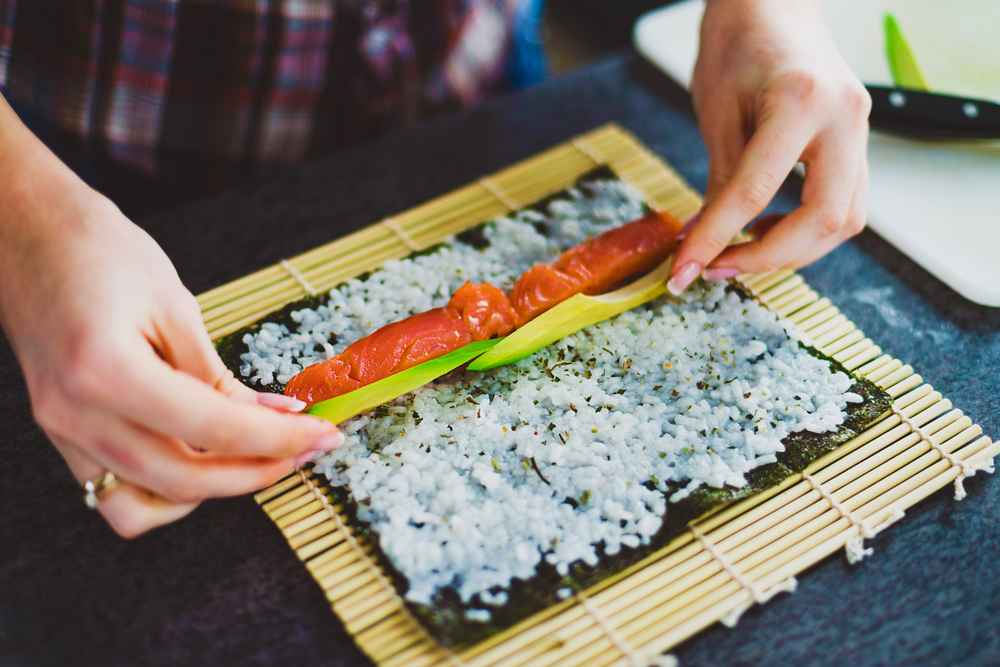
Step 1
When making your rice, rinse it under cold water in a strainer until the water coming off is no longer cloudy. Cook the rice in a rice cooker or on low heat on the stove with 1 cup of rice to 1.2 cups of water, ensuring the rice stays sticky and doesn’t turn to mush. Move the rice to a wooden or plastic bowl to cool.
Step 2
While it is cooling, mix 1/2 cup rice vinegar in a small pan over low heat with two tablespoons of sugar and two teaspoons of salt until dissolved. Mix it into the rice and allow it to continue to cool. Do not put it in the fridge to cool. You could always run a fan to help speed it up.
Step 3
Depending on your choice of ingredients: slice your avocado, shrimp, cucumber, and fish into long thin strips. Make sure your strips are small enough that when held together, they are no more than as round as a quarter combined. Once sliced, you can set it all aside. Set up your rolling station with your bamboo mat and nori.
I prefer plastic wrap over my bamboo, but that is optional. If you keep your bamboo roller dry, it’ll work fine without the plastic wrap.
Step 4
Over the bamboo, you can choose to do rice or nori on the outside. Make sure your layer of rice is nice and thin, much more delicate than seems normal; otherwise, it will become a thick roll very quickly. Layer your fish, vegetables, and preferred ingredients, including condiments if desired. Starting with one side, slowly and tightly roll your sushi, stopping every half roll to gently squeeze the roll for firmly compacted rice. Be careful not to press too hard, or your nori might pop. Literally, pop, and you’ll have rice smooshing out the sides.
Step 5
When you have a successful roll, you may have to wet the end of the nori to get it to stick together and make that final seal. Allow your sushi to sit for a minute or two before cutting. Ensure your knife is sharp, or it will dent your roll and rip your nori instead of cutting it smoothly.
It will take some time and practice. It might not look pretty, but you should get all the flavors you love at a fraction of the cost.
Talent, Skill, and Art Increase Prices
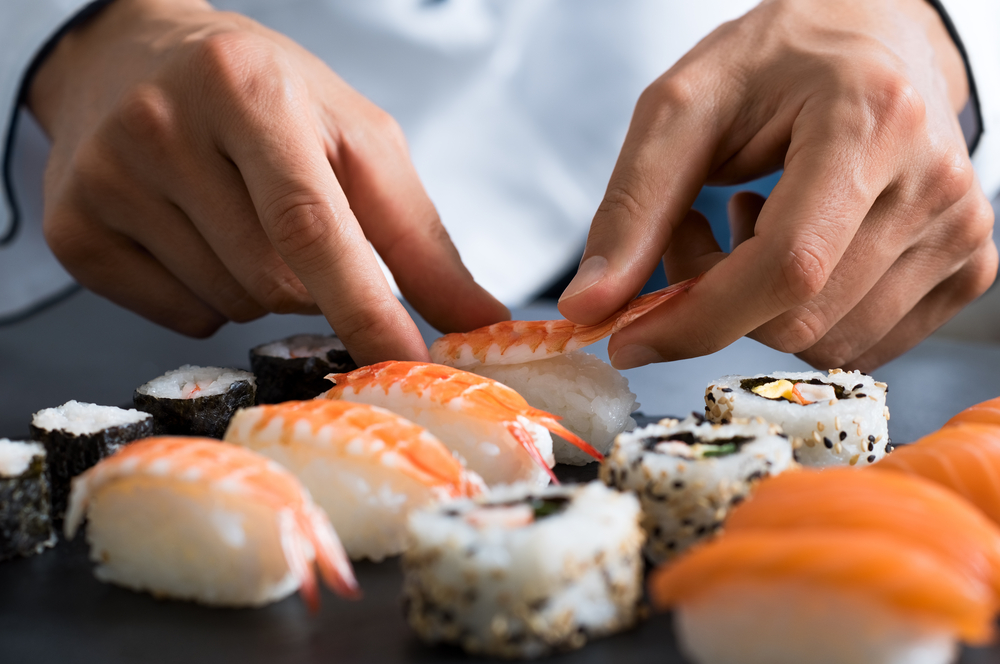
When you eat out, it’s more than just getting food. It’s buying an experience. This is part of the excitement of eating at a restaurant, whether it’s sushi, hibachi, a steakhouse, Italian, Indian, Thai, or American. We expect what we get at a restaurant to be presented differently than what we make at home. Often, we go to restaurants to not only escape having to cook but to get something we don’t usually make at home. There’s a premium to eating out, the service, food, and expertise of the chefs and staff.
When it comes to sushi, you’re experiencing a finely curated blend of flavors and the expertise of an Itamae who may have been rolling sushi for 35 years. You’re paying for his experience before your meal and the experience of your meal that night—high-end ingredients, skill, and a flavor unlike anything else.
